Moroccan Dinner: Moroccan Braised Lamb Shanks
Rich stews and braises are one of my favorite things about North African cuisine. I often call my Moroccan-ish stews tagines, because that’s what they are inspired by. But the word tagine technically refers to the dish in which the stew is cooked. The cone shaped pot allows slow cooking over a low fire without too much evaporation, so you can cook meat long and slow while a rich sauce forms around it. Since I don’t actually own a tagine, it’s a bit of a misnomer to call my recipe that. So I’ll be precise and call it Moroccan Braised Lamb Shanks, instead.
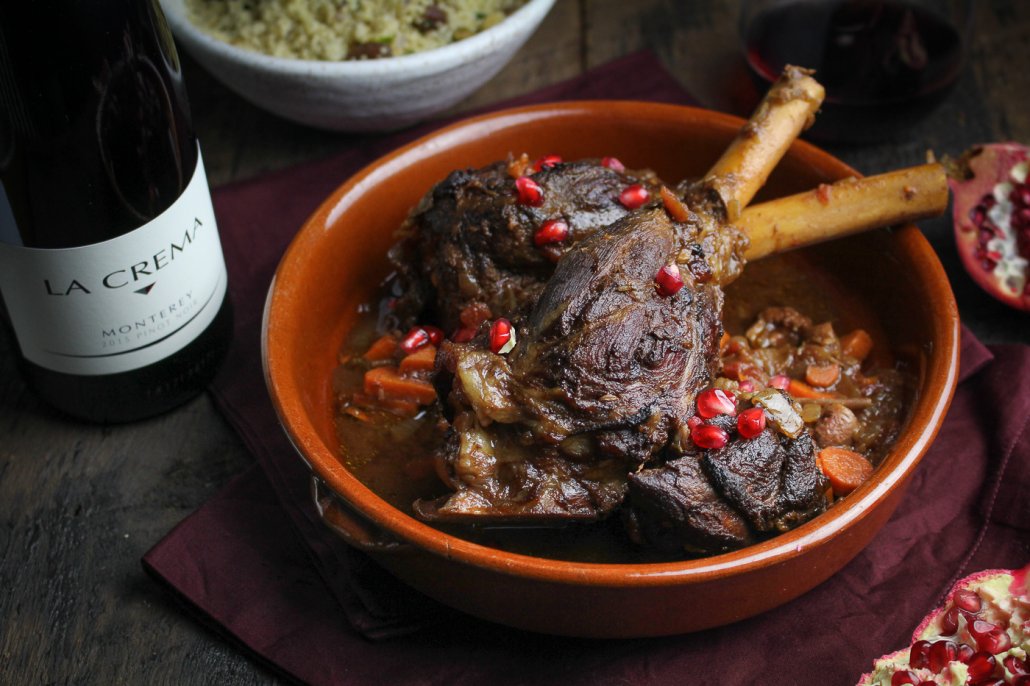
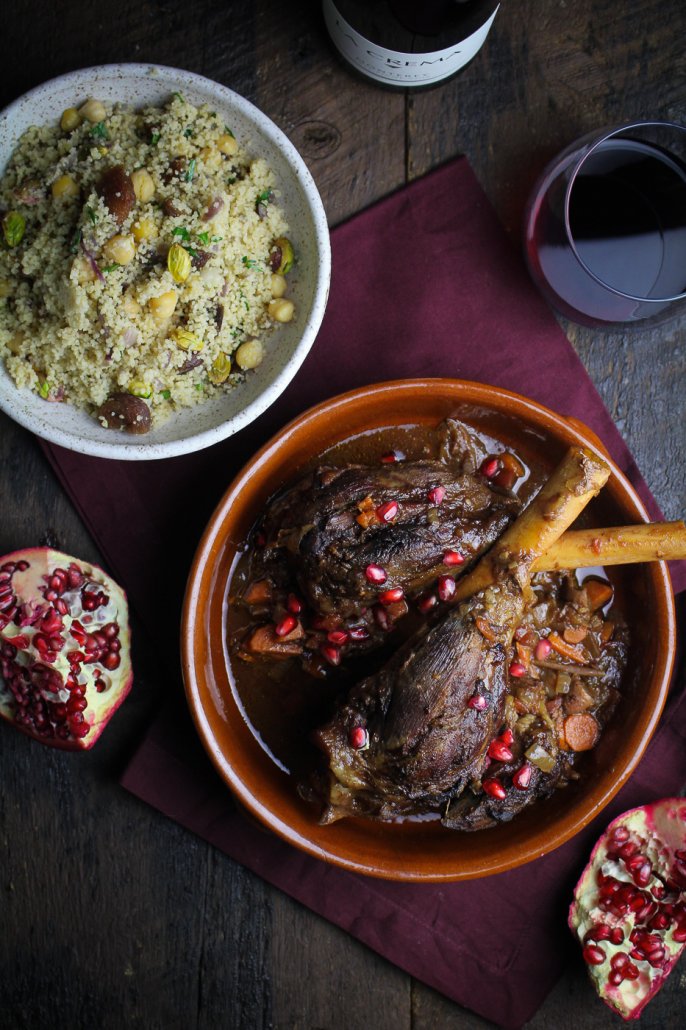
So what differentiates Moroccan-style braised lamb shanks from any other braised lamb dish? For me, it’s the spices and the dried fruit. Most tagines and Moroccan braises have at least one type of dried fruit, such as apricots or dates. They also use warming spices like cinnamon and ginger. For this recipe, I’ve also added pomegranate molasses, Pinot Noir, tomatoes, and broth to the braising liquid. After 2-3 hours in the oven, the shanks are meltingly tender and the sauce is thick and sweet. It’s absolutely delicious on its own or over couscous.
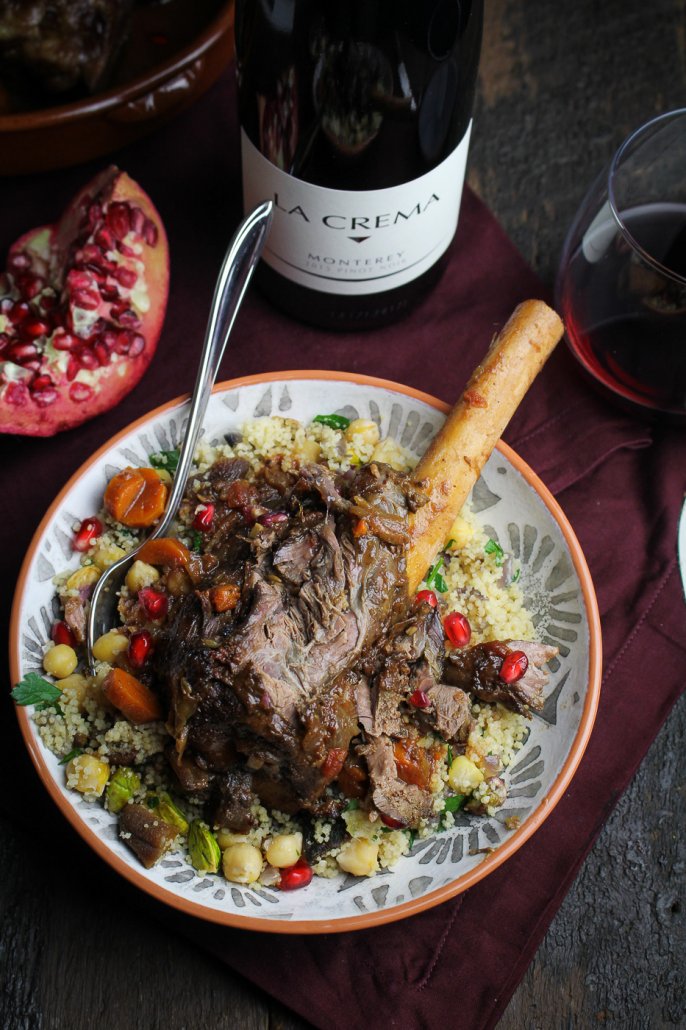
A word of caution: lamb shanks can be very fatty. Before you begin cooking them, cut off and discard as much of the opaque white fat as you can. I sometimes also loosen or remove the silverskin that surrounds the muscles, although removing too much of it will cause the shank to fall apart. After cooking, be sure to skim off as much of the liquid fat as you can before serving. A little fat is ok, but too much will ruin the mouthfeel of the dish, in my opinion.
Lamb is great with fruity, yet spicy red wines like Pinot Noir. Light reds suprisingly stand up fairly well to warmer spices, making La Crema’s Monterey Pinot Noir a good choice for enjoying with this dish.
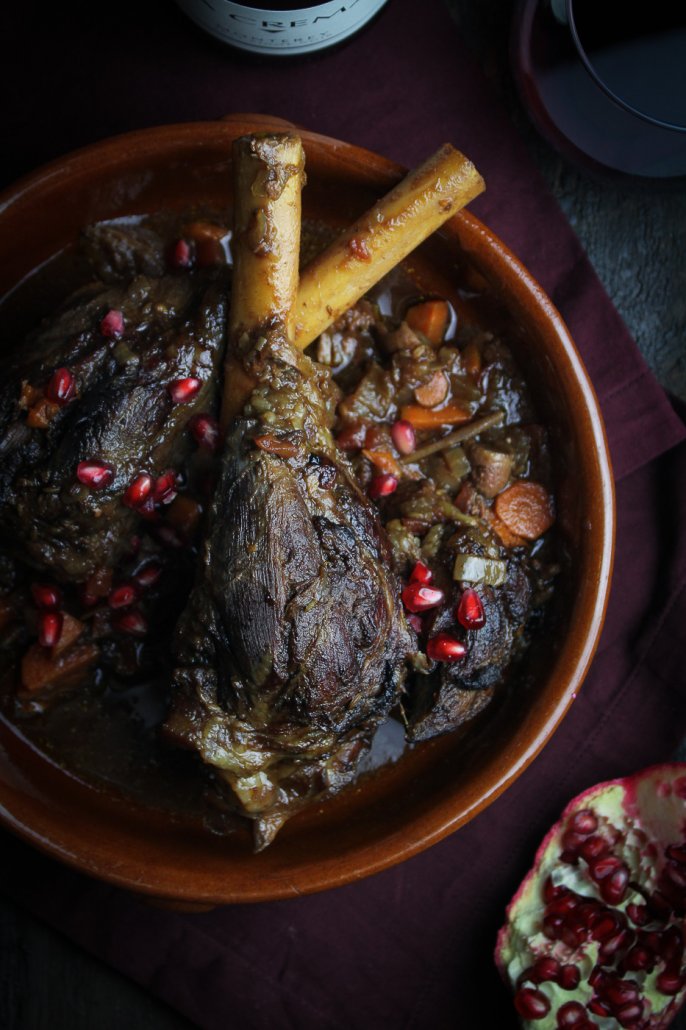
Moroccan-Braised Lamb Shanks
Author: Katie Morris of Katie at the Kitchen Door
Inspired by recipes in the New Book of Middle Eastern Food
Ingredients
- 3 lbs. lamb shanks
- 1 tsp sweet paprika
- 1 tsp whole cumin seed
- 1 tsp whole fennel seed
- 1/2 tsp sea salt
- 1/2 tsp ground coriander
- 1/4 tsp black pepper
- 2 TBS olive oil
- 1 onion, peeled and diced
- 2 carrots, peeled and diced
- 3 cloves garlic, peeled and minced
- 2 cups lamb, chicken, or beef stock
- 1 cup Pinot Noir
- 1 cup crushed tomatoes
- 1 whole cinnamon stick
- 10 dates, halved
- 2 TBS pomegranate molasses
- Arils from one fresh pomegranate
Instructions
- Trim any opaque white fat from the lamb shanks and discard. Mix the paprika, cumin, fennel, sea salt, coriander, and pepper together in a small bowl. Place the lamb shanks in a casserole dish and rub the spice mixture all over them. Cover the dish and refrigerate overnight.
- Preheat the oven to 400 degrees F. Heat the olive oil over medium-high heat in a large dutch oven. Add the diced onion, carrot, and garlic to the pan and saute until onion is golden brown, about 3-5 minutes. Remove the sauteed vegetables to a bowl and add the lamb shanks to the pan. Brown the lamb shanks on all sides.
- Add the sauteed vegetables back to the pan with the lamb. Add the stock, wine, crushed tomatoes, cinnamon stick, dates, and pomegranate molasses to the pan. The braising liquid should fully cover the lamb shanks. If it does not, add an additional cup of stock or water.
- Place the lamb in the 400 degree oven and cook for 30 minutes, then lower the temperature to 350 degrees F. Cook until the lamb is fork-tender and the braising liquid has thickened to a sauce-like consistency. This should take about 2 to 2 1/2 hours. Check the lamb every 30-45 minutes. As the level of the braising liquid drops and exposes the lamb shanks, turn the lamb shanks every 30 minutes to prevent the tops from burning. If the sauce looks overly thick, add a bit of water back to the pan.
- When the lamb is finished, remove it from the oven and let sit for 10 minutes. Carefully skim off as much of the fat on top of the sauce as possible. (Alternatively, you can chill the lamb overnight, skim off the hardened fat when it’s cold, then reheat and serve the next day). Serve the lamb over couscous with a generous amount of the braising sauce. Scatter fresh pomegranate seeds on top of the finished plate.




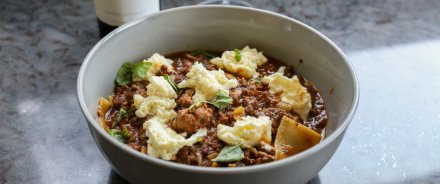

Comments